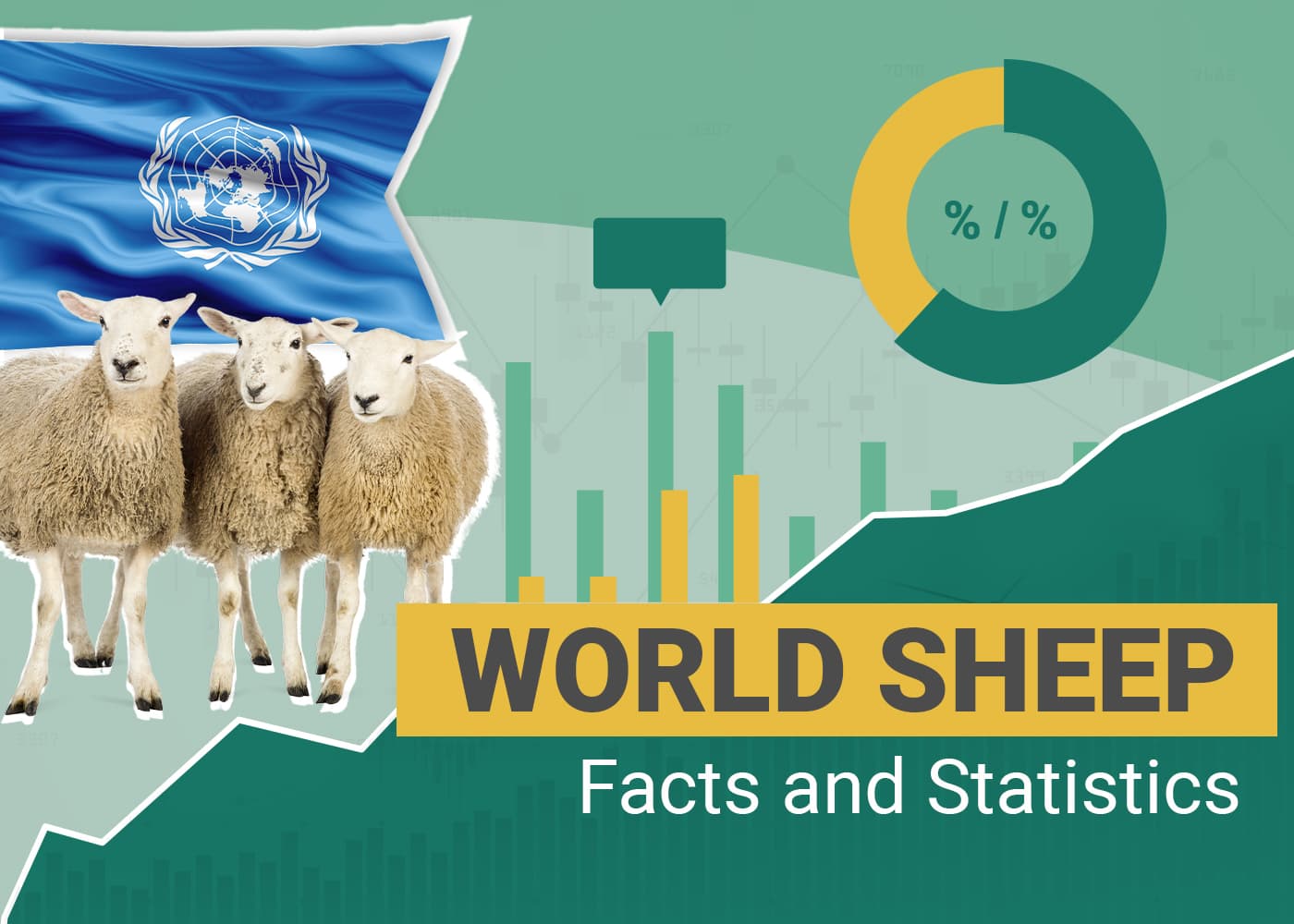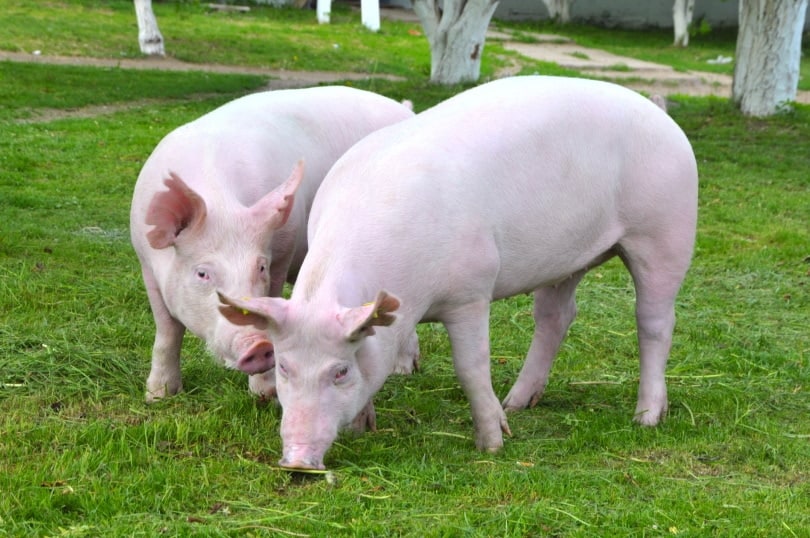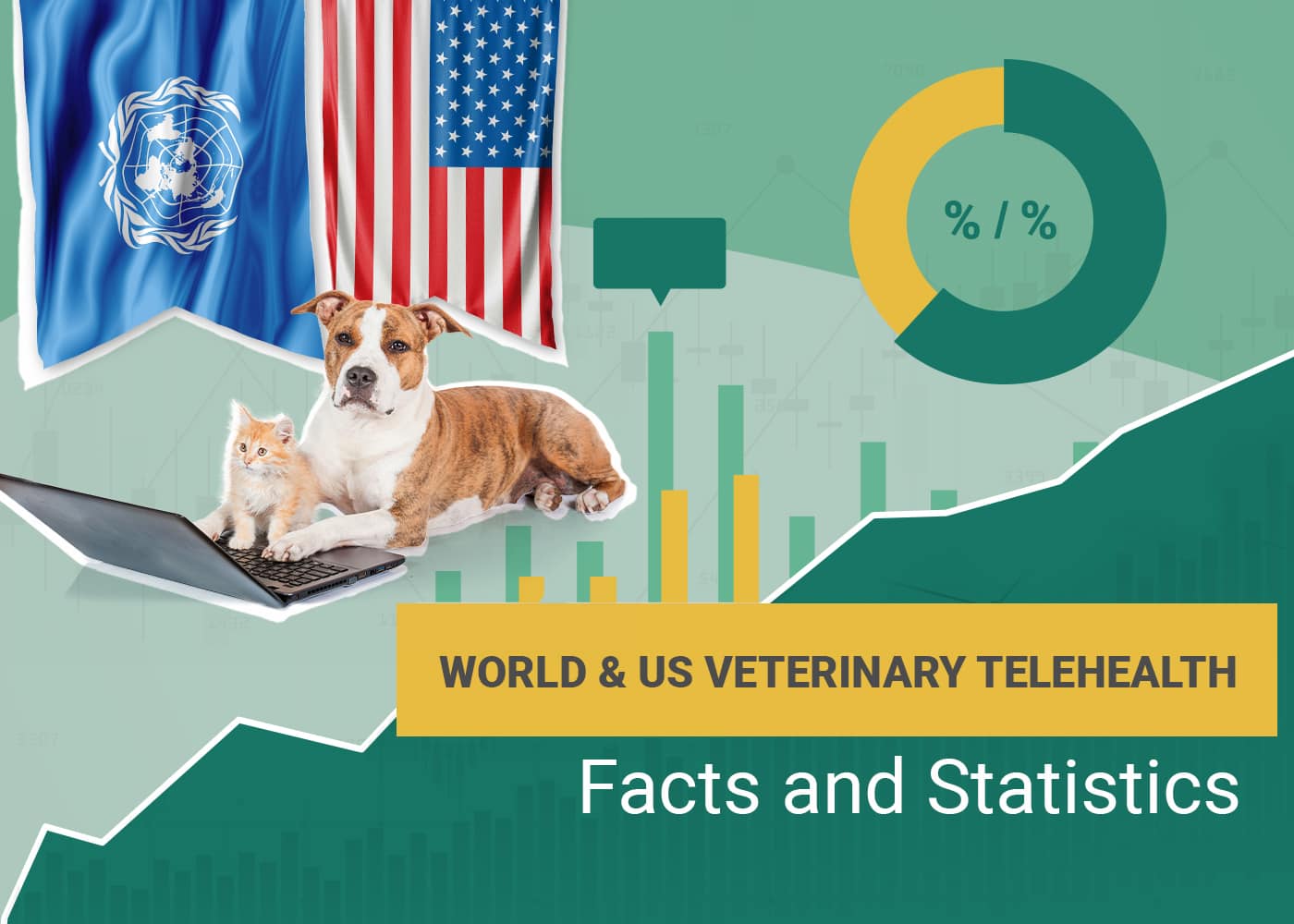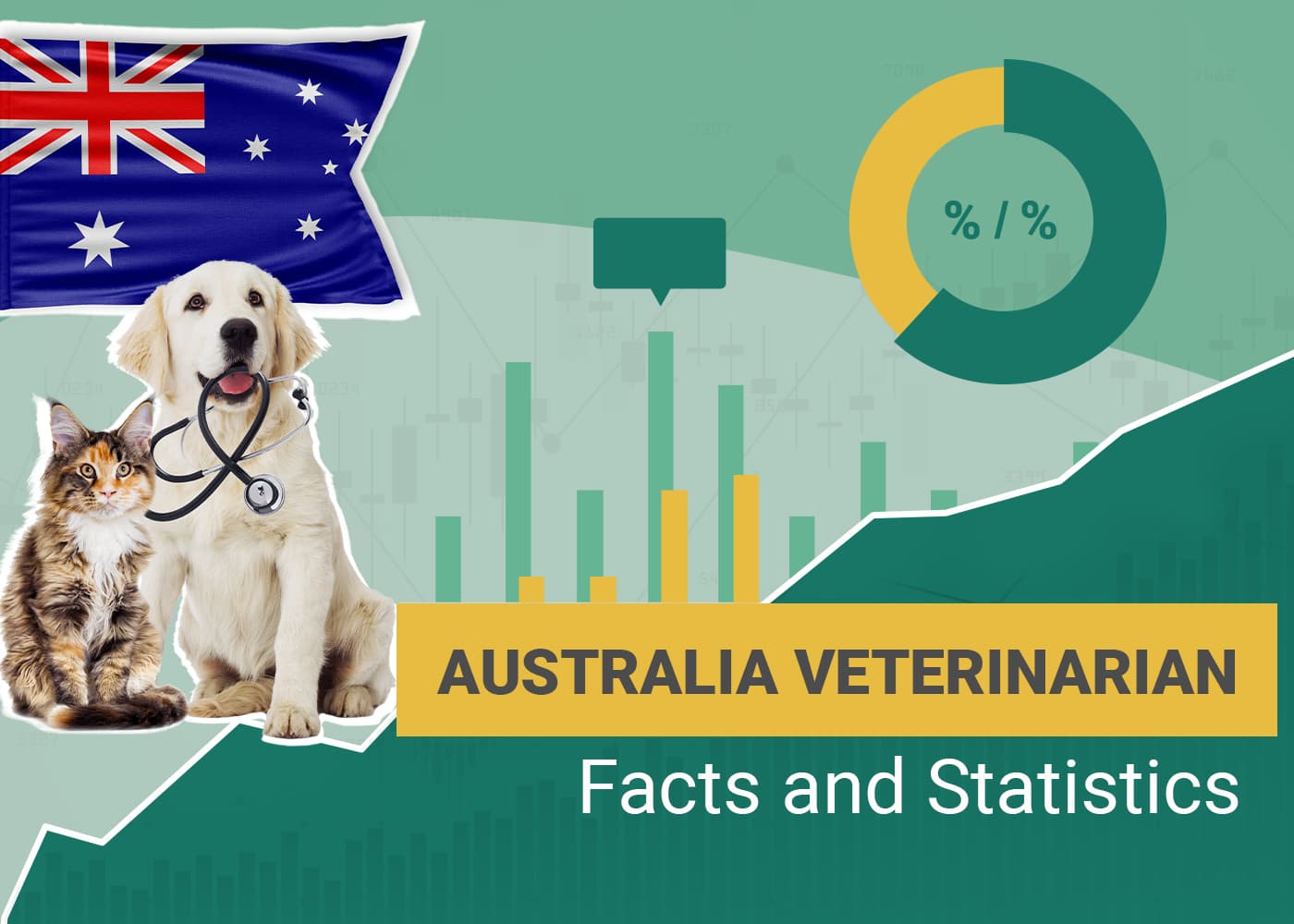Click to Skip Ahead
Note: This article’s statistics come from third-party sources and do not represent the opinions of this website.
Although sheep aren’t necessarily animals you see every day—maybe only in some areas of the world—there are quite a lot of them. There are over 1 billion sheep in the world! They certainly have their usefulness, as we can get wool and meat from them. Despite the large number of sheep in the United States and worldwide, there aren’t quite as many as there used to be.
Even though sheep can provide tasty meat, most people don’t eat it regularly and prefer chicken and beef. Even clothing made from wool isn’t quite as popular as it used to be, with people leaning toward cheaper or artificial alternatives made from cotton or polyester.
Could the population of sheep be declining because they’ve outlived their usefulness? Or is it simply due to people switching to cheaper alternatives instead of products produced by sheep? Continue reading as we look at some of the statistics surrounding the sheep population, including how many are left in the world and what they are being used for today. Our statistics are arranged in the following categories:

The 11 Sheep Statistics
- There are over 1 billion sheep in the world.
- There are over 5 million sheep in the United States.
- There are more than 50 sheep breeds in the United States and around 900 worldwide.
- A single sheep can produce up to 10 pounds of wool per year.
- Australia is the leading producer of wool, producing about one-quarter of the world’s wool.
- Two-thirds of sheep production in the U.S. is located in the Southern Plains, Pacific, and Mountain regions.
- Over 75% of sheep farming operations in the U.S. raise sheep for meat.
- Lamb and mutton consumption in the United States was around 1.3 pounds per capita in 2023, and it is expected to hold steady.
- Along with beef, lamb and mutton production has one of the worst impacts on the environment, using 39.72 kg of carbon dioxide equivalents per kilogram of meat.
- Sheep wool production contributes to only about 0.5% of the global supply of textile fibers.
- Half a billion sheep are killed each year for consumption.
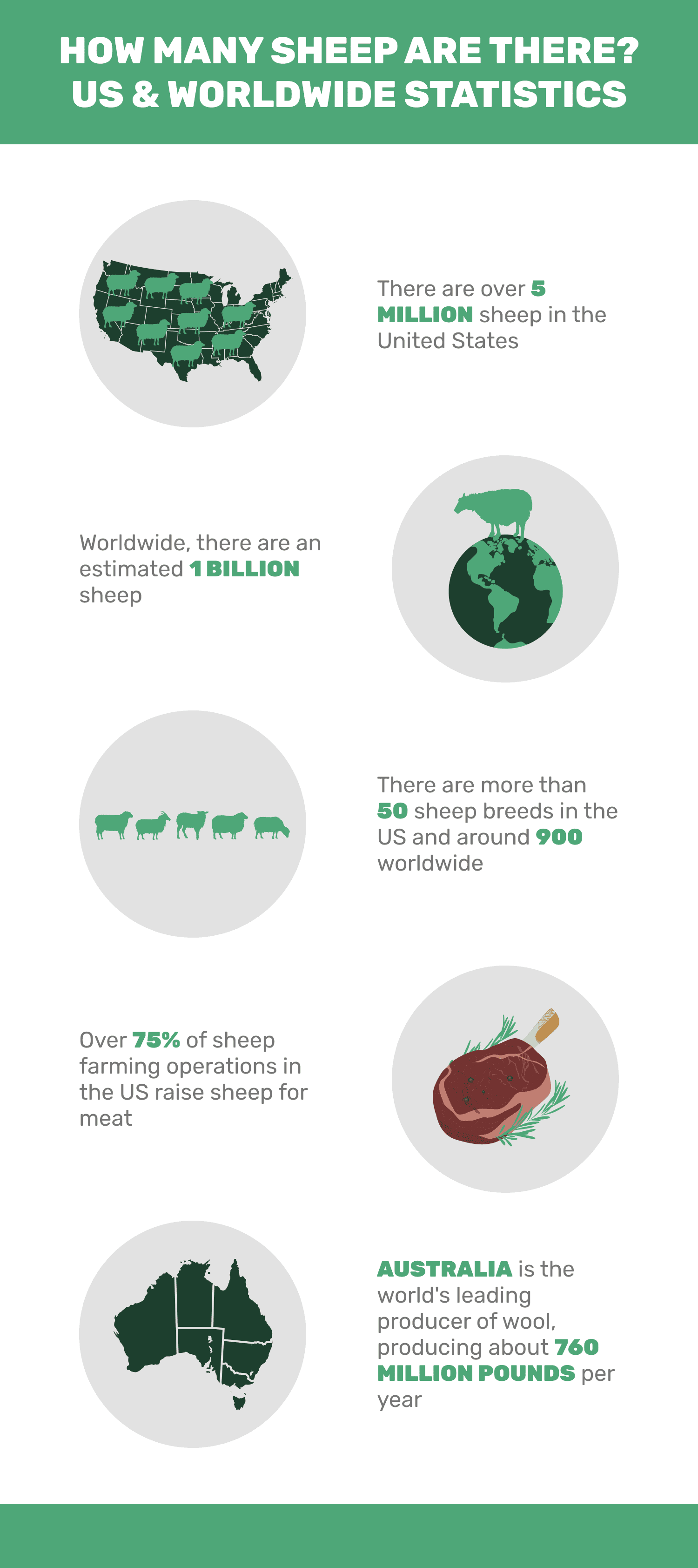

Sheep Population Statistics
1. There are over 1 billion sheep in the world.
(University of Kentucky)
Of all the countries in the world, China has the most sheep. What’s interesting is that despite having the most sheep, China is not the top wool-producing country. That title goes to a different country, which will be discussed in more detail later.
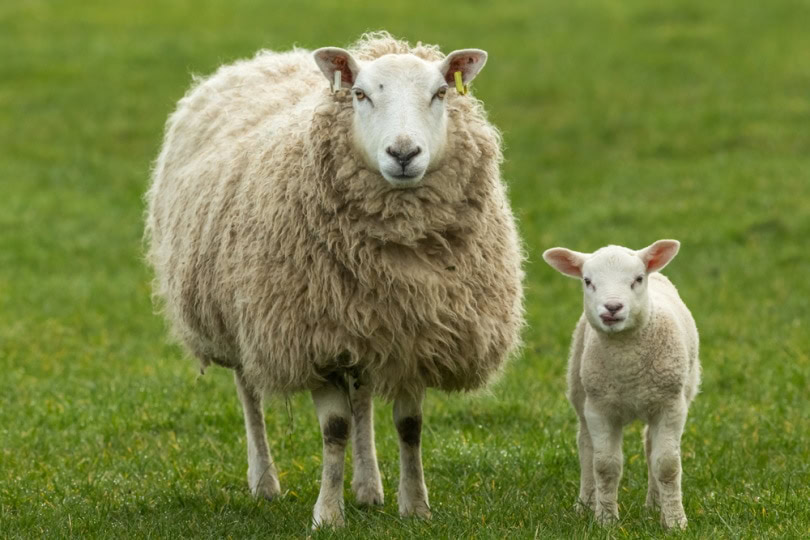
2. There are over 5 million sheep in the United States.
(USDA)
As of the end of 2023, there were 5.2 million sheep in the United States. This number is down 1% from the 2019 numbers and significantly from the approximately 51 million sheep the sheep population peaked at in 1884.
3. There are more than 50 sheep breeds in the United States and around 900 worldwide.
(University of Kentucky)
Different breeds of sheep produce different types of wool and meat. The American Sheep Industry Association recognizes 47 breeds of sheep in the United States, but there are over 50, including breeds that are not recognized.
However, it’s still hard to tell the difference between them unless you’re experienced.

Sheep Wool and Meat Production Statistics
4. One sheep can produce up to 10 pounds of wool per year.
(International Wool Textile Organization)
Each sheep is capable of producing 9.9 pounds (4.5 kg) of wool per year. This would be enough wool to cover an entire large sofa or make up to 10 articles of clothing. With over 1 billion sheep worldwide, there certainly isn’t a lack of wool fabric.
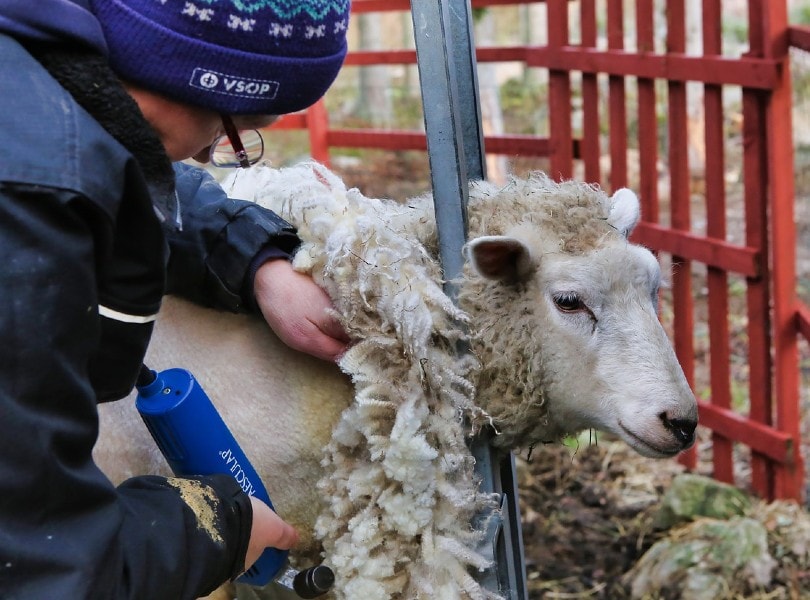
5. Australia is the leading producer of wool, producing about one-quarter of the world’s wool.
(Woolmark)
Australia produces about one-quarter of the world’s wool, at over 760 million pounds (345 million kg). China, Russia, New Zealand, and Argentina follow behind Australia as other leading wool-producing countries. About 98% of Australia’s wool gets exported to other countries to be made into fabric and clothing.
6. Two-thirds of sheep production in the U.S. is located in the Southern Plains, Pacific, and Mountain regions.
(USDA)
Texas is the largest sheep-producing state in the United States, followed by California. This has remained relatively constant since the early 1900s.
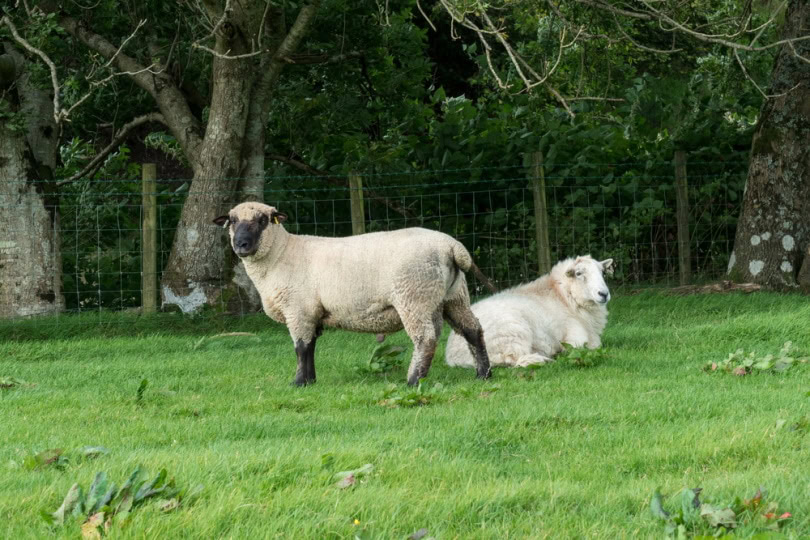
7. Over 75% of sheep farming operations in the U.S. raise sheep for meat.
(USDA)
Some breeds of sheep are bred specifically for their wool, others are bred for their meat, and some are bred for both. 81.6% of sheep operations in the U.S. raise sheep for meat as opposed to 15.8% for wool. Additionally, some sheep farmers raise sheep for more than one purpose.
8. Lamb and mutton consumption in the United States was around 1.3 pounds per capita in 2020, and it is expected to hold steady.
(Statista)
The per capita consumption of lamb and mutton, meaning the amount of lamb and mutton consumed per person, has held at 1.1 pounds since 2016, up from 1 pound in 2015, and is now at around 1.3 pounds per capita. That number is expected to hold steady from 2020 until 2030.
9. Along with beef, lamb and mutton production has one of the worst impacts on the environment, using 39.72 kg of carbon dioxide equivalents per kilogram of meat.
(Our World in Data)
Lamb and mutton produce the second-most greenhouse gas emissions behind beef, producing 99.48 kg of carbon dioxide equivalents per kg of meat. However, lamb and mutton production occupies the most land at 369.81 meters squared per kilogram.
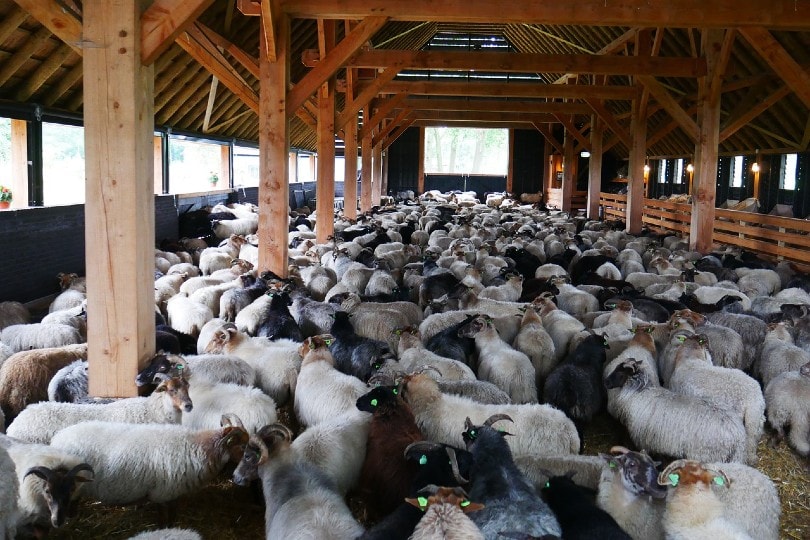
10. Sheep wool production contributes to only about 0.5% of the global supply of textile fibers.
(Oxford Academic)
Polyester makes up 51.5% of the global supply of textile fibers, and cotton makes up 24.4%. The demand for wool is down due to consumers not being willing to pay the higher price when there are cheaper alternatives and the casualization of workwear in which wool clothing isn’t worn as much.

Sheep Slaughter and Death Statistics
11. Half a billion sheep are killed each year for consumption.
(World Economic Forum)
The human population has doubled in the last 50 years, but meat consumption has tripled during that same time frame. About half a billion sheep are sent to slaughterhouses each year, but that number isn’t nearly as high as the number of chickens (50 billion) and pigs (1.5 billion) slaughtered yearly.
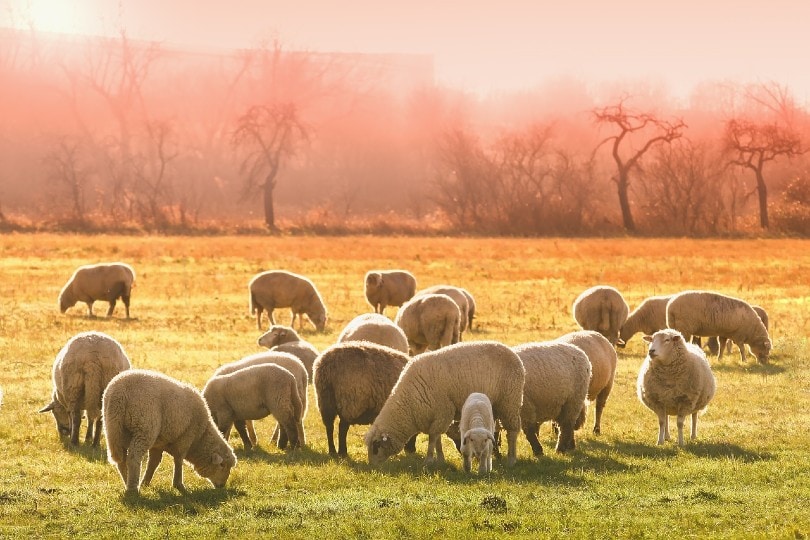

FAQs
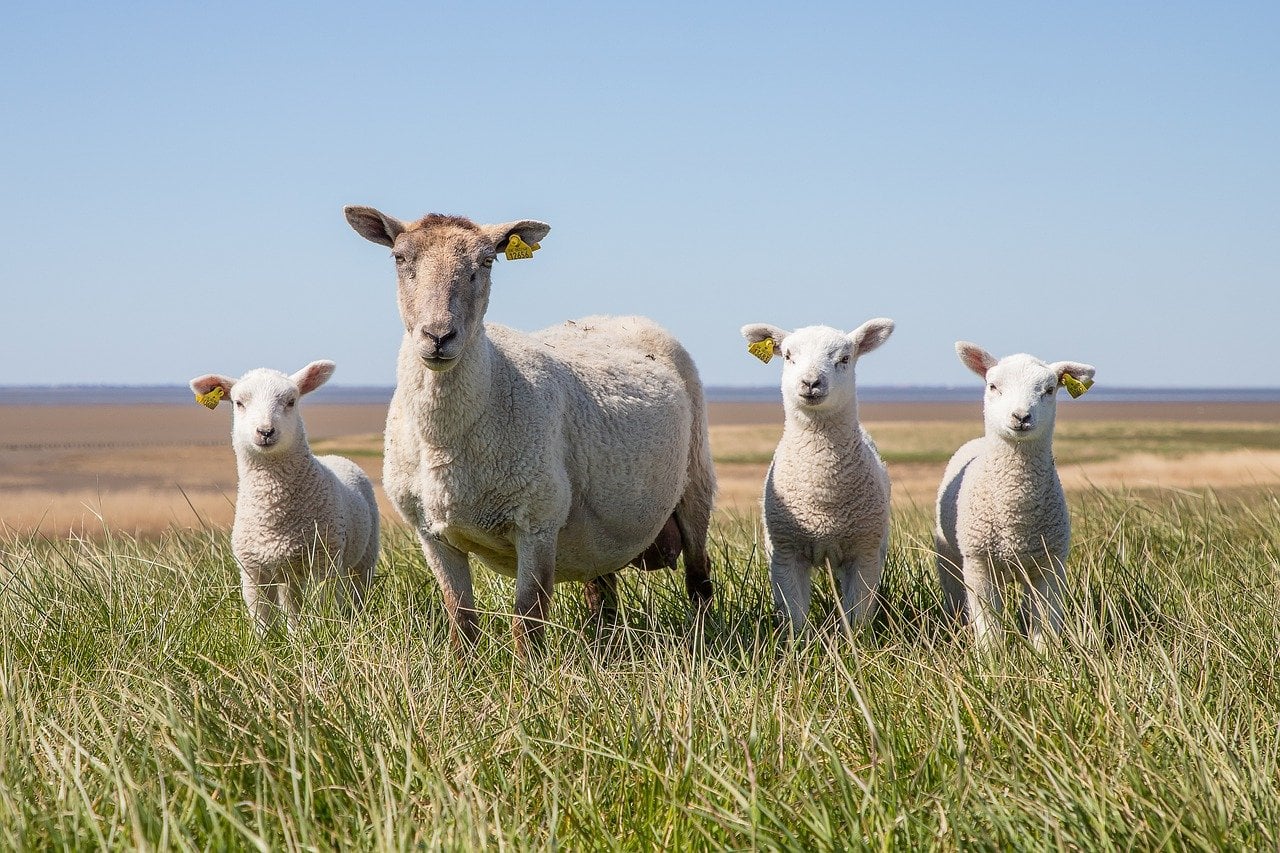
How is the market for sheep products changing?
Since consumers no longer have as much interest in purchasing clothing and other textiles made from wool, sheep farmers and producers have to find other ways to make a profit off of sheep. Many of them are turning to the production of lamb and mutton instead of wool. (USDA)
From their perspective, this makes a lot of sense, considering that the consumption of lamb and mutton, especially in the U.S., has held steady for the last five years and is expected to stay that way throughout the next five years.
Unfortunately, that means that more sheep will be taken to slaughterhouses and killed for their meat instead of being sheared, which, if done properly and humanely, doesn’t result in the death of the sheep. That also means that more sheep being killed for meat and other by-products, such as leather, is not going to do anything to help the already declining sheep population.
Does being sheared hurt the sheep?
As long as it is done properly and humanely, shearing a sheep doesn’t hurt it. Shearing is actually a necessary process to keep the sheep healthy. Ideally, sheep should be sheared once a year. Without it, their wool can become heavy, matted, and tangled, which can cause health problems for the sheep.
There is some concern about the sheep undergoing stress as a result of being sheared due to being handled multiple times and shearing being done in a hurry. This is usually the result of multiple sheep needing to be sheared simultaneously. If the sheep become stressed, it can lead to cuts and nicks if they are uncomfortable and not positioned correctly. (RSPCA)
As long as sheep aren’t mistreated during the shearing process and the shearer is experienced, it is usually painless. However, sheep aren’t always treated humanely when being sheared, which can make the shearing painful or uncomfortable and even result in death if the sheep aren’t properly cared for.
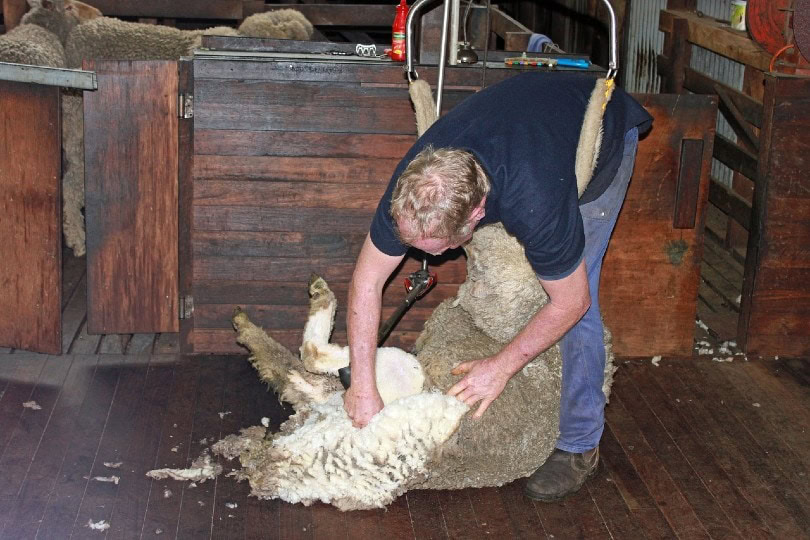
Do sheep require special care after being sheared?
As you learned earlier, over one million sheep die each year within 30 days after being sheared. This is usually due to sheep being sheared improperly or not being cared for properly afterward.
After they’re shared, the sheep must stay warm and dry since that is what their wool is for. A flock of sheep that has just been sheared is supposed to be kept in a warm and dry environment so that they can huddle together for warmth.
They should also be fed more than usual, using the extra food as energy to help keep them warm. Particularly vulnerable sheep, such as lambs or older sheep, may also need to be covered in a blanket to stay warm.
Another concern after shearing sheep is shearing wounds. If a sheep is cut or nicked during the shearing process, the wound can become infected due to dirt or bacteria entering the wound. Large wounds should be stitched up, but a wound should be treated with an antiseptic to prevent infection. Any wounded sheep should be marked as well to monitor the healing process. (Government of Western Australia)
A humane and ethical sheep farmer or producer will ensure that their sheep are given the proper care after being sheared. However, not all sheep producers treat their sheep humanely, which is why many die each year due to improper care.
Are there any regulations on sheep farming?
There is no international governing body that regulates sheep farming. Regulations are usually up to the country where the sheep are being farmed, and they can differ on a country-by-country basis, which is why the sheep industry in some countries is more humane than in others. Any regulations in place usually ensure that sheep farming is done in a way that is sustainable, humane, and ethical.
In the United States, sheep farming and meat from sheep are regulated by the same organizations that regulate other types of meat: the U.S. Department of Agriculture (USDA) and the Food and Drug Administration (FDA).
However, there are other organizations, such as the American Sheep Industry Association, that regulate wool production and represent the interests of farmers as well. (American Sheep Industry)
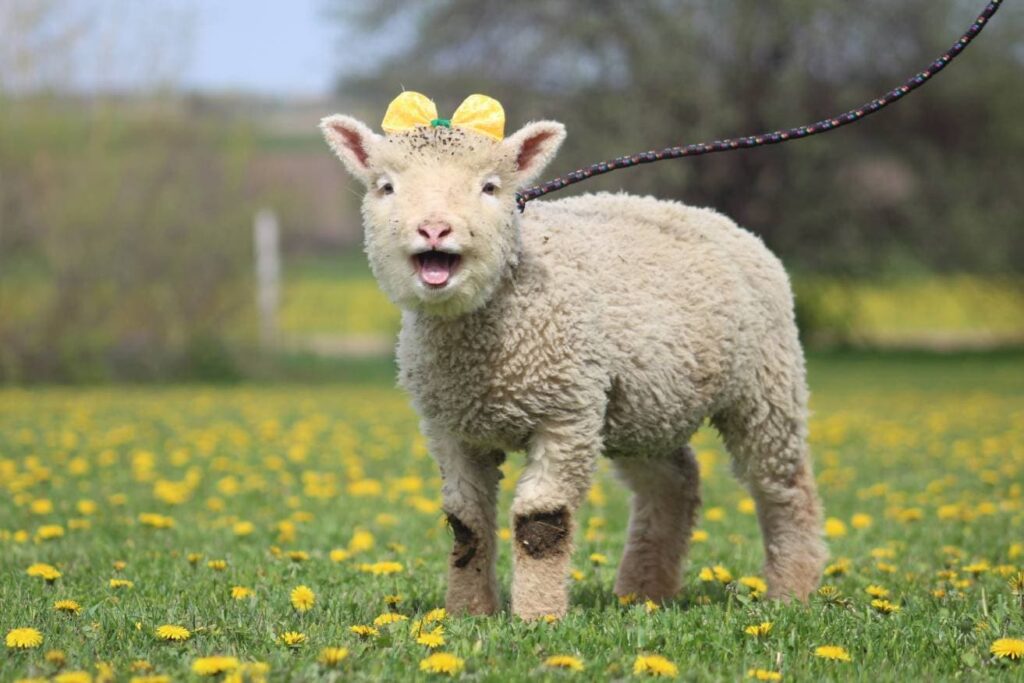

Conclusion
Despite there still being over a billion sheep in the world and 5 million in America, the sheep population is declining along with the demand for wool-based products. Millions of sheep die every year due to slaughter or improper care. These factors could contribute to why the population is declining as producers focus more on meat production. But it could also be because some countries don’t regulate their sheep industry like others do.
This article wasn’t meant to make you change your mind about consuming products produced by sheep but rather to make you aware of the problems in the sheep industry. If you feel like you should do something, consider only purchasing meat and wool products that are regulated or certified to ensure that the sheep are treated as humanely and ethically as possible.
- See Also: How Much Does a Sheep Cost?
Featured Image Credit: manizosx, Shutterstock
